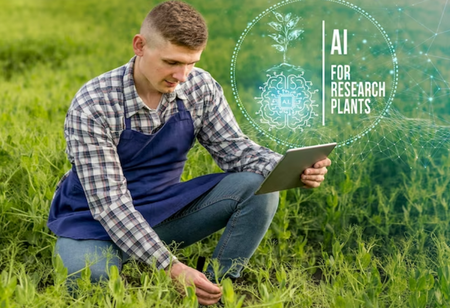
The introduction of artificial intelligence to manage labor-intensive, high-tech farming operations is driving a digital transformation in Asia's agriculture sector. This movement is altering the cultivation and harvesting practices of traditional Asian farms, providing alternatives for sustainable farming and rural development.
Farmers in the region are actively tackling difficulties, with a particular emphasis on labor shortages and heritage-led innovation. Local firms are emphasizing regional innovation as important for rural development and industrial modernization.
Takanori Fukao, a robotics professor at the University of Tokyo, suggests that Asian countries are exploring a new frontier in agriculture. Fukao anticipates a future where farms are strategically prepared to maximize the efficiency of robots.
Asia's Ageing Population and Technological Agriculture Innovations
Asia is on course to become one of the world's oldest areas in the next decades. In Japan, for example, the population is quickly aging, and the labor force is diminishing. According to the National Institute of Population and Social Security Research's most recent projection, Japan's present population of roughly 124 million people is expected to fall by 30% by 2070.
Farmers in Japan's Saitama Prefecture utilize four-wheeled AI robots to selectively pluck ripe cucumbers. Agrist Inc. created the robot, which uses a camera to analyse cucumber size and AI to calculate the best time to harvest vegetables.
It takes one to three spheres every two minutes and places them in a case. Furthermore, the robot's arm is precisely positioned relative to the cucumbers, ensuring that their stems are not injured during harvesting.
Japan's foray into smart agriculture does not end there. Inaho Inc. has leased a cherry tomato-picking AI-equipped robot to a farm in the Netherlands. This system, which chooses ripe tomatoes for harvest, exemplifies the delicate balance between machine precision and crop handling.
Mimos Berhad, a government organization in Malaysia, has teamed with Ancom Nylex Berhad and the German company Helm AG to introduce farmers to precision farming platforms. This initiative provides farmers with free access to satellite data and AI technologies, allowing them to efficiently monitor crops and optimize harvests.
AI farming is preserving Traditions
AI is being used in insect farming in ASEAN countries. In several Southeast Asian countries, insects have long been a component of the traditional cuisine. They are also a sustainable source of protein that is gaining popularity around the world.
AI-based technologies, according to Entoverse, a Singapore start-up, can assist insect farmers in monitoring and optimizing breeding conditions. The business has created an artificial intelligence engine to manage cricket farms. Cricket One, Vietnam's largest cricket farm, is presently using their technology to detect infections in their early stages.
Another local cuisine-led innovation involves the use of lion-head geese, a key element in classic Cantonese marinated goose dishes.
For decades, Chinese breeders have relied on experience-based approaches to raise these geese. Shenzhen University developed an AI programme this year that enhances the survival rate of lion-head geese by 30%.
According to Zibo Lin of Shenzhen University, "in the past, diseases such as duck plague, fowl cholera, and E. Coli may have posed a serious threat to lion-head geese farming." When a flock comes into contact with one of these contagious diseases and farmers are unable to recognise it in time, many geese may perish overnight."
Furthermore, the university has said that by utilizing AI, farmers can detect diseased geese much earlier and take timely treatment measures. Also AI in farming can improve the production output of lion-head goose farming, allowing the regional delicacy to tap into the demand of a larger market. With this, the use of AI in the traditional farming industry will undoubtedly become more extensive and in-depth. Systems for automated feeding, monitoring, and controlling will reduce labor pressure and increase product quality while meeting agricultural needs.

